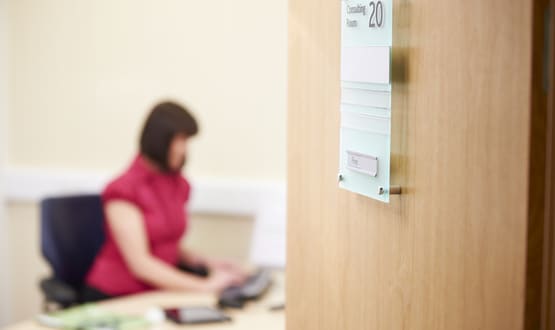Your place to mine
- 15 September 2010
Innovation in healthcare interoperability

Winner: GP2GP

The GP2GP electronic transfer of records project is that elusive beast among national NHS IT projects – a scheme that delivers what it says on the tin to an audience that wants it.
As a result, it has been the subject of praise since its inception – and last year won the interoperability prize at the E-Health Insider Awards 2009 in association with BT.
It is easy to under-sell the ingredients which have made it a success. Clinical engagement, supplier buy-in, a working technical solution and a workable roll-out plan have all played their part in a project that has been used for more than 1.5m record transfers.
But it has definitely helped that the electronic transfer of records has been at the top of the IT wish list for GPs since the mid-1990s – and was promised in the 2003 GP contract.
Jill Hepworth, programme manager for the GP2GP initiative at NHS Connecting for Health, says CfH has worked closely with the BMA and RCGP’s Joint GP IT committee.
She adds: “It was very much driven by the profession. Before there was a CfH there was a project put together to explore a proof of concept under the RCGP. A considerable amount of was work done using an XML message and proving that it was possible to transfer clinical records from one system to another.”
Early days
Following the launch of the National Programme for IT in the NHS, staff began working with GP system suppliers EMIS, INPS and iSoft – which had all been involved in the earlier work.
The plan this time was that transfers would happen via the Spine using an HL7 message. INPS and EMIS were the first two suppliers to achieve compliance.
Dr John Williams, a Guildford GP and clinical lead for the project, says a defining moment was seeing the first live transfer of a record between two EMIS practices in Gateshead in 2005.
The second most memorable moment was the transfer of a record between an EMIS and INPS Vision practice 18 months later.
He adds: “To see the looks on people’s faces when a Vision record turning up in an EMIS practice in a few minutes was truly amazing.”
Three years on, Vision 3 and EMIS LV are accredited for GP2GP and iSoft Synergy2 is now in first of type piloting in NHS Hampshire practices.
CfH is confident that other supplier products will be added to that list of accredited systems. EMIS Web is due to go into first of type piloting before the end of the year in NHS Heywood, Rochdale and Middleton, and TPP and Microtest are working to progress products through GP2GP accreditation during 2011-12.
Once in doubt, it now seems likely that it will be possible to transfer records between Read 2 systems (such as EMIS LV, Vision 3, iSoft Synergy, Microtest Evolution) and CTV 3 systems like SystmOne.
Dr Williams says he has been amazed with the progress that has been made. He adds: “It is entirely reasonable that we can do two-way GP2GP with the other systems using different clinical coding sets and I have every reason to think that this is an achievable aim.”
The GP2GP project is also hoping that it will eventually be able to enable transfers involving SNOMED coding as record systems develop.
Further plans
The GP2GP project team is also working on enhancing GP2GP record transfers. Suppliers are expected to begin work on developing the requirements of version 2.2 of GP2GP during 2011.
This will involve developing systems to send large messages (over 5Mb in size and with more than 99 attachments) and “A to B to A” transfers (where a patient leaves their original practice and joins a new surgery and then returns as a patient to the original practice; a scenario for which the classic example is a university student).
Despite its good press, the project team is under no illusions that GP2GP has all the answers. Practices continue to experience problems with poor data quality and with the appearance of data when records are transferred between different systems.
The emphasis from the beginning, however, has been on safety; so that even if the record looks different the meaning will always stay the same.
Dr Williams says: “We have never claimed that this is perfect, and we have had to make some compromises, but we have never compromised on safety.
“The project is committed to improving the transfer of clinical information in a standard format and the development of clinical archetypes as part of the V2.2 requirements will enhance GP2GP transfers significantly.”
Hepworth says one of the advantages GP2GP has enjoyed is that training has been funded centrally, enabling the GP2GP team to ensure that practices receive appropriate training.
She says the arrival of GP2GP is a significant business change for practices and it has always been the aim of the project and the RCGP’s Joint GP IT committee that practices should receive appropriate training and guidance materials.
As part of the implementation, the project has worked with clinical system suppliers as well as with the RCGP, which has produced supplements to its Good Practice Guidelines, and the data quality organisation PRIMIS+, which has developed online learning tools for practices.
Hepworth adds: “There is a tendency to assume that GP2GP is just making the existing paper process an electronic one, but it is a different process and practices need to make the necessary business process changes to safely and effectively manage the process of ingoing and outgoing electronic health records.”
Those that have done so are obviously gaining from the change. All strategic health authorities conducted a benefits survey last year and found that more than 70% of the live practices surveyed reported that GP2GP saves time on the first consultation and time spent summarising records.
Becoming mainstream practice
Dr Williams is also optimistic that data quality will improve over time. He adds: “I think there is a growing feeling that its part of our professional behaviour that electronic health records must be kept in a manner that is suitable to share with other practices.”
One GP who has been on the receiving end of GP2GP record transfer is Dr Ravi Shanker, a GP in Croydon where transfers between EMIS and INPS practices first went live.
He says the practice still monitors what comes in and sometimes has to “clean it up” when the data is put into the practice system. However, overall he is positive about what he sees as the improving quality of GP2GP record transfers and the benefits of the project for his practice as a whole.
He adds: “We used to wait weeks and months for notes whereas now it takes literally minutes. It’s saving times and resources as well as improving care,” – an endorsement that must be music to CfH’s ears.
The awards will be presented on Wednesday, 6 October in the Grand Hall at the Grand Connaught Rooms, Covent Garden, London. For more information or to reserve a table, please visit the awards website.




